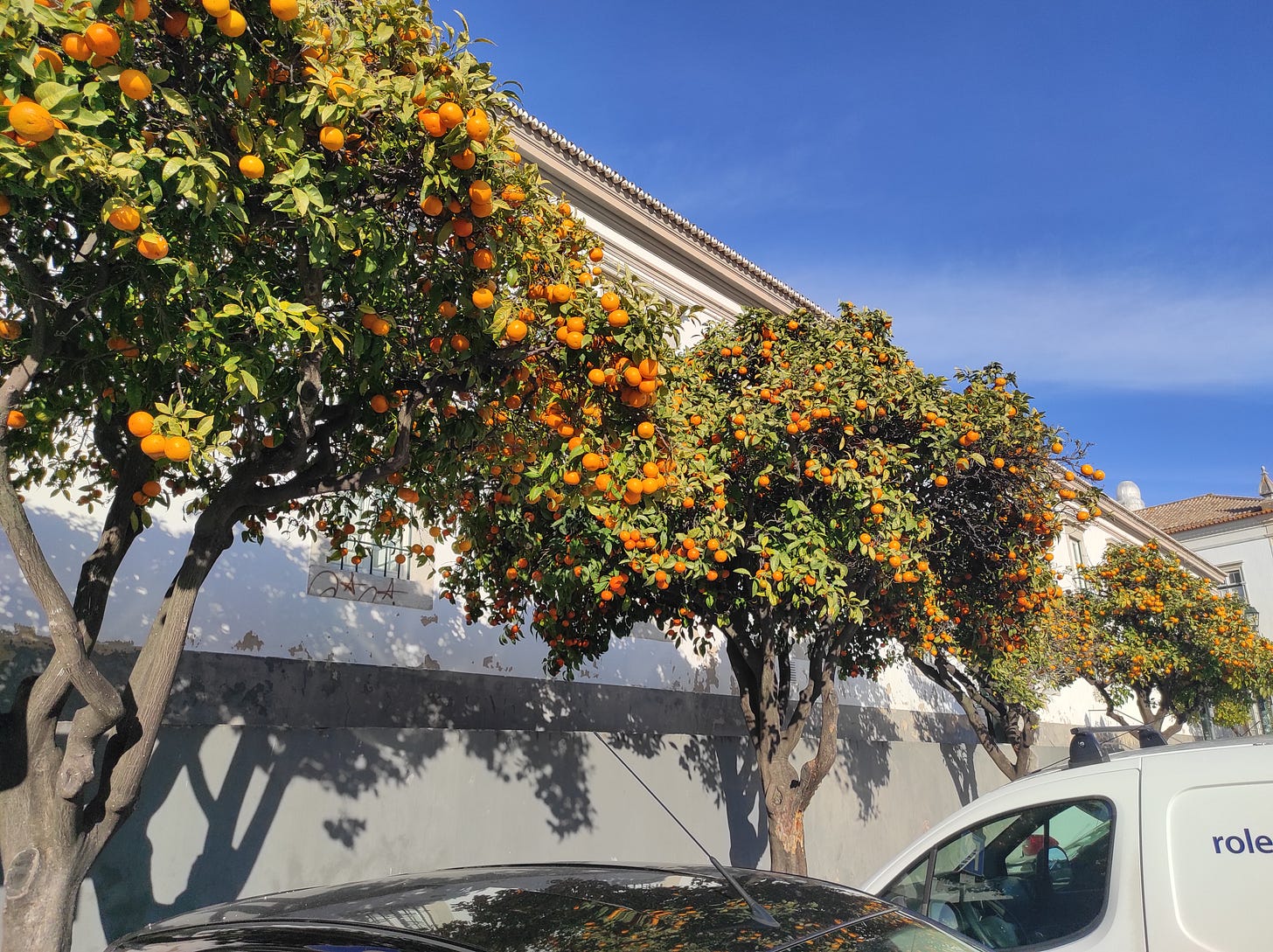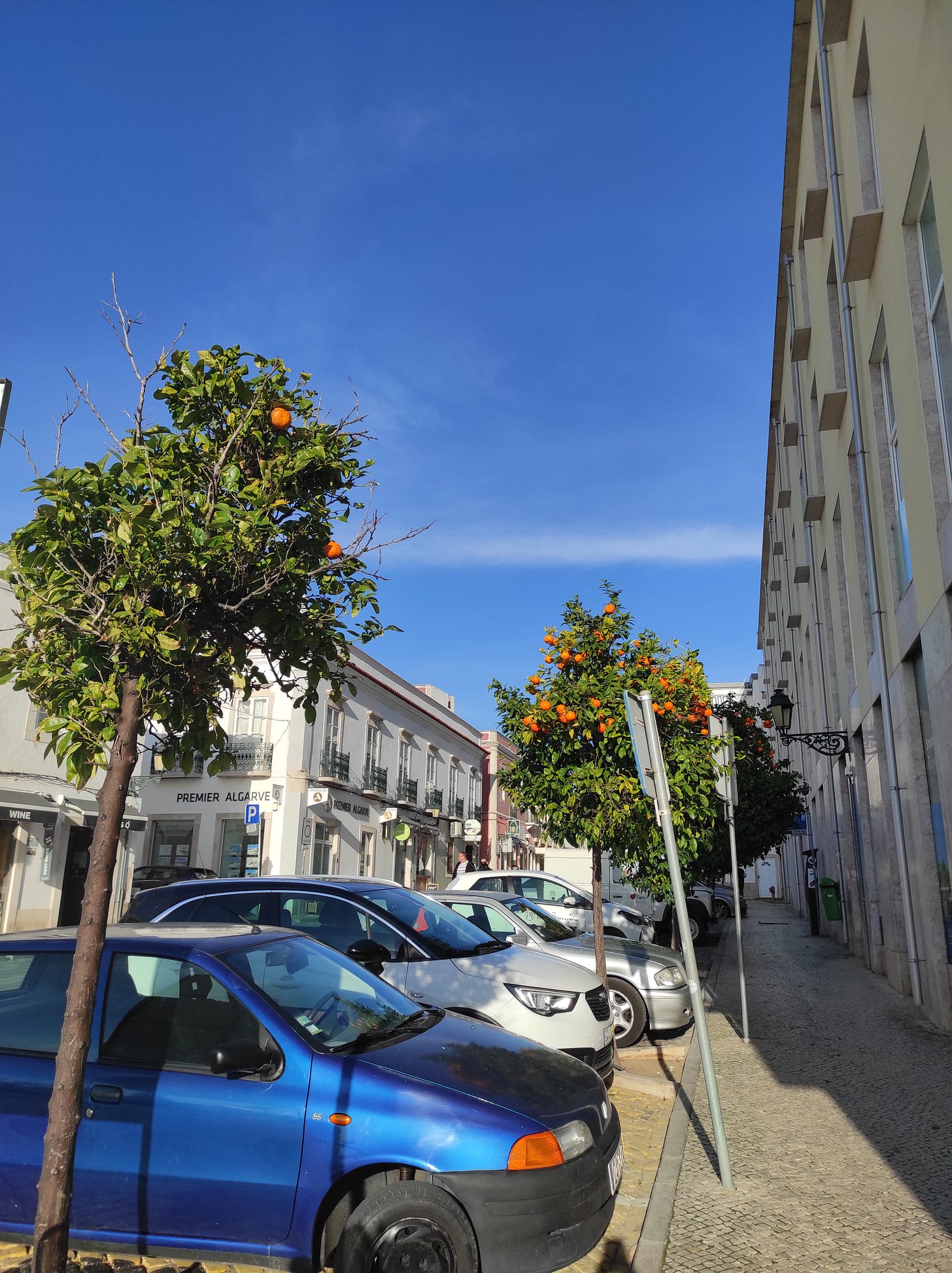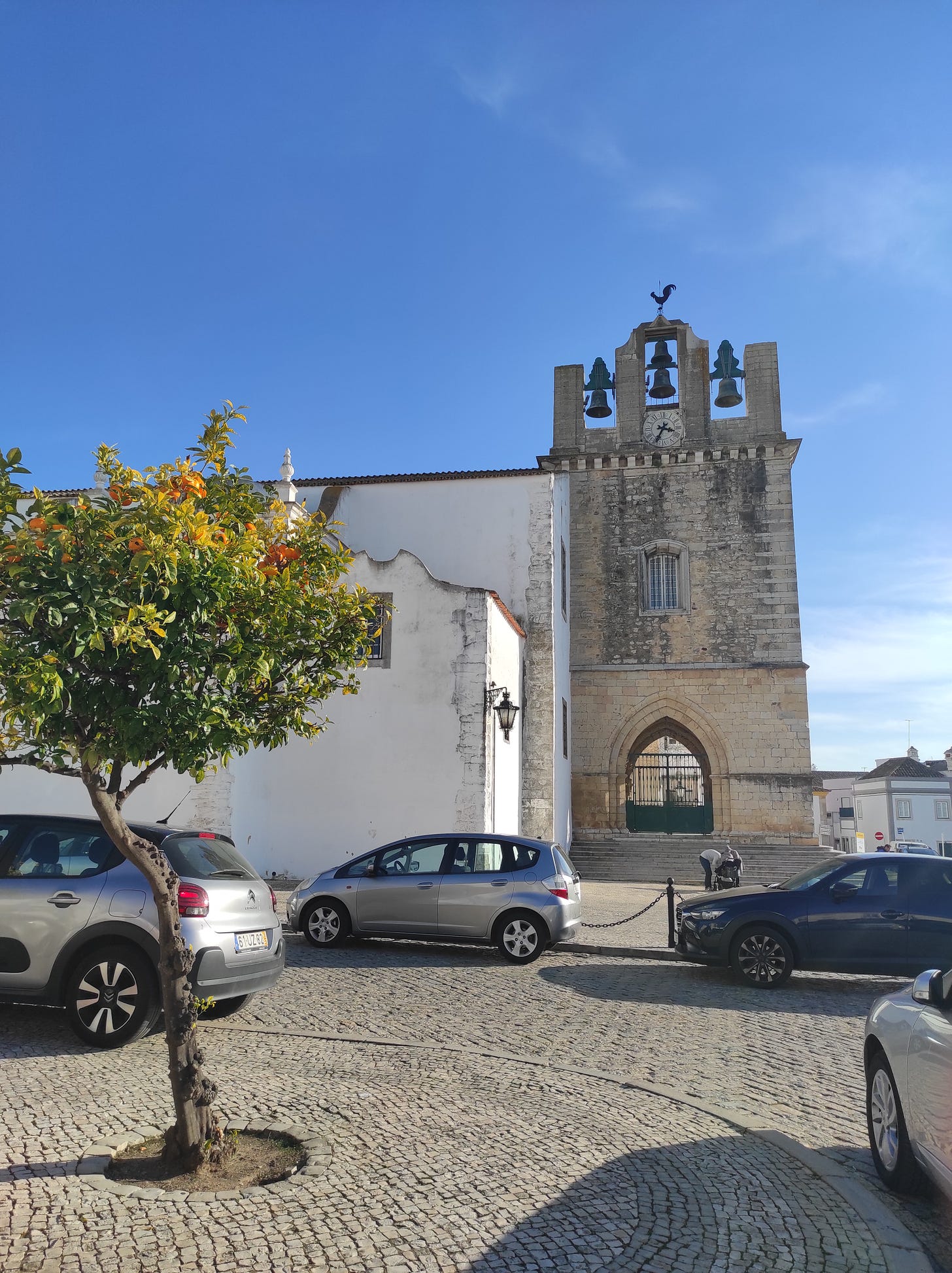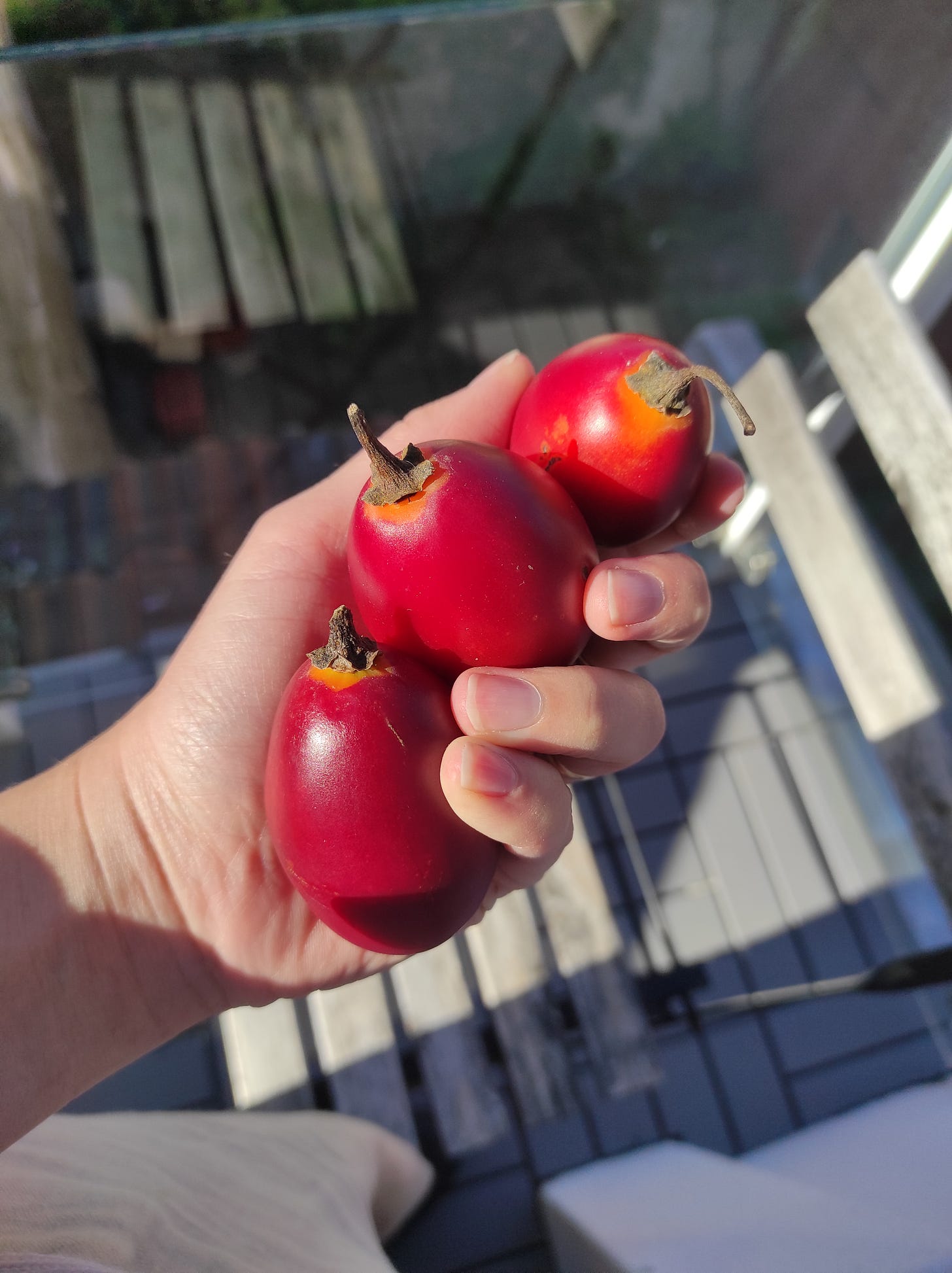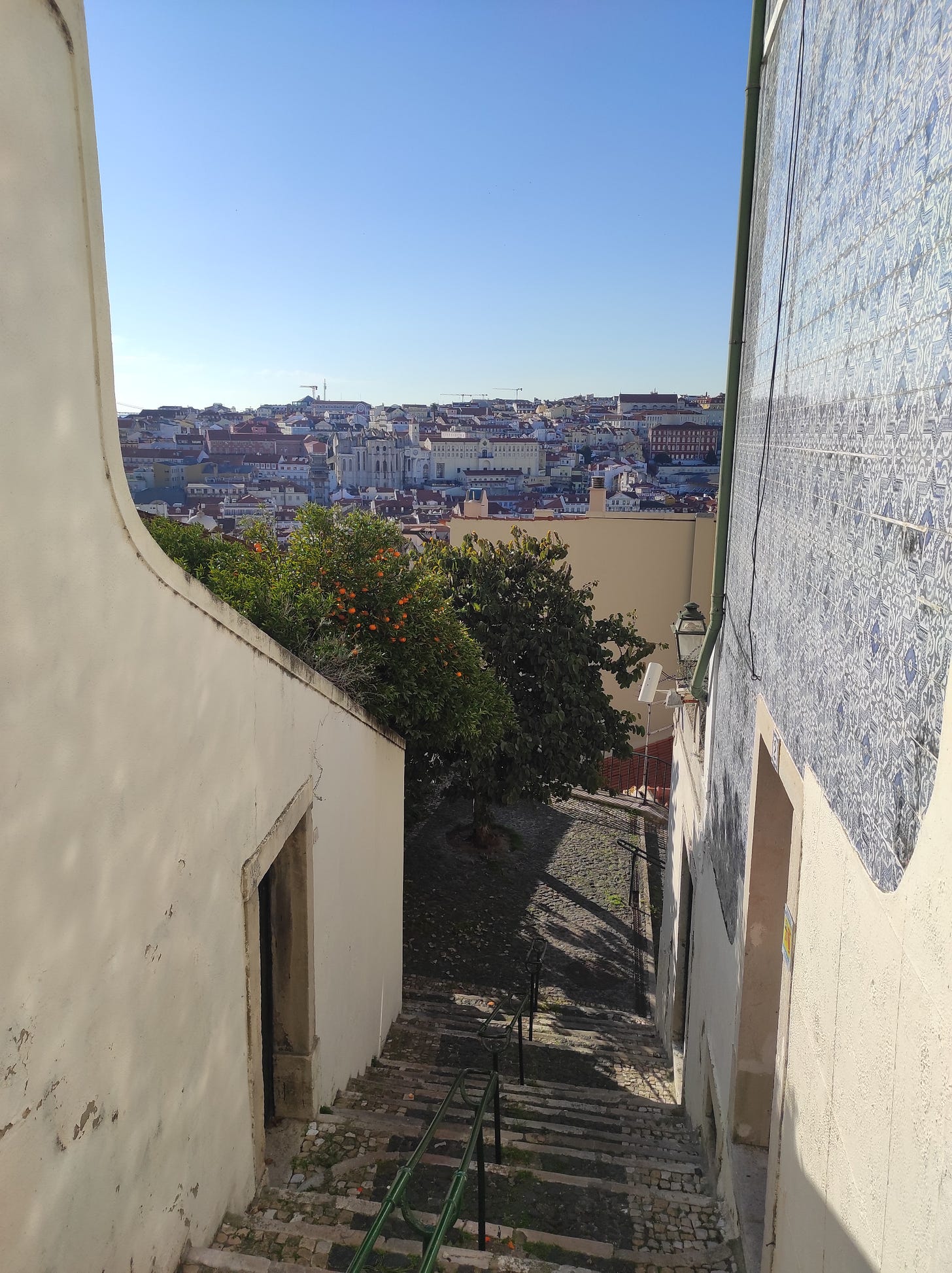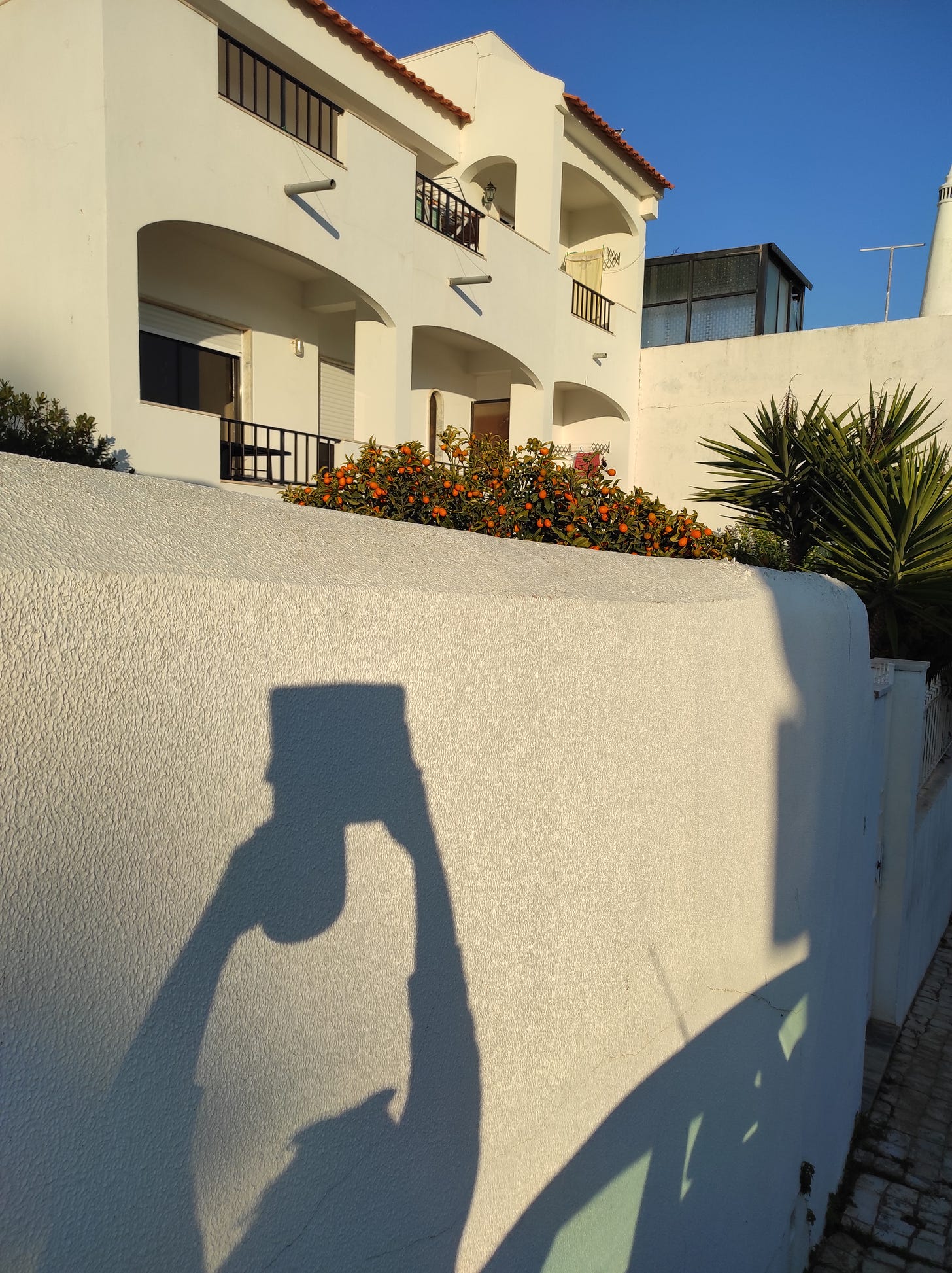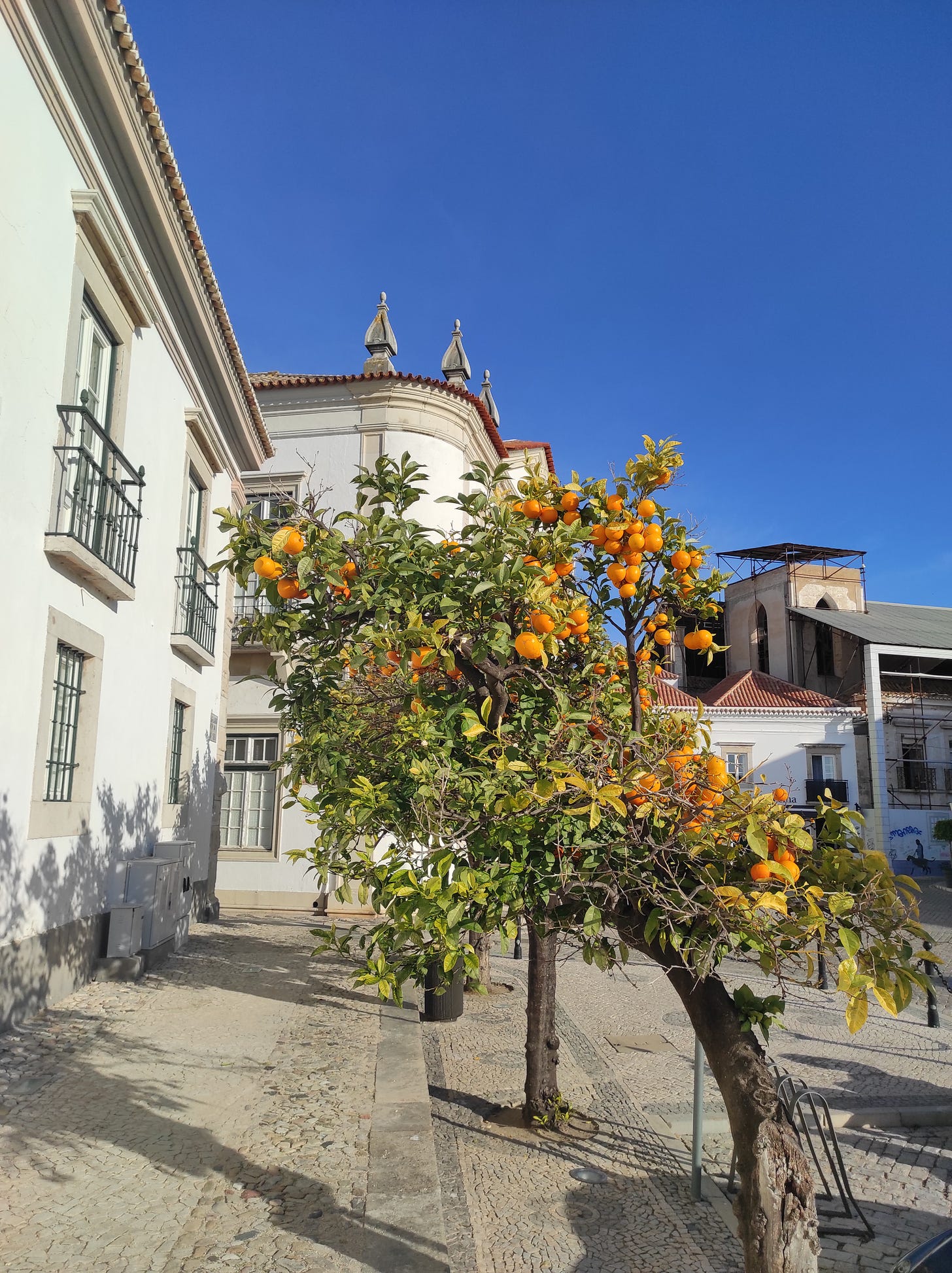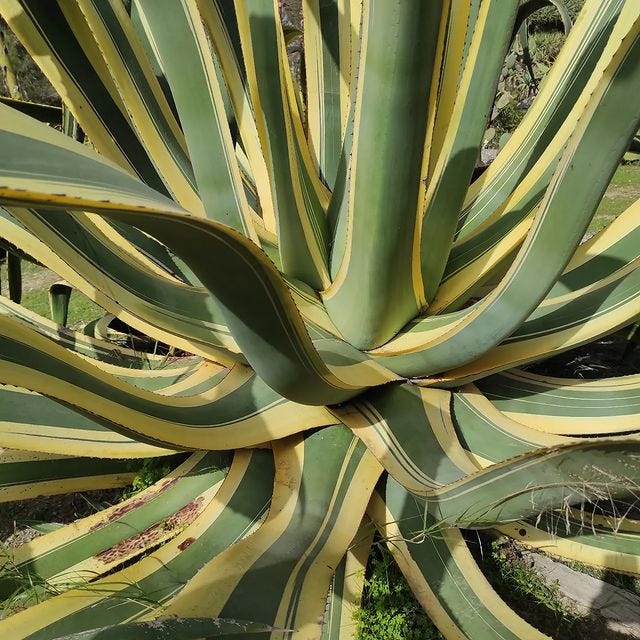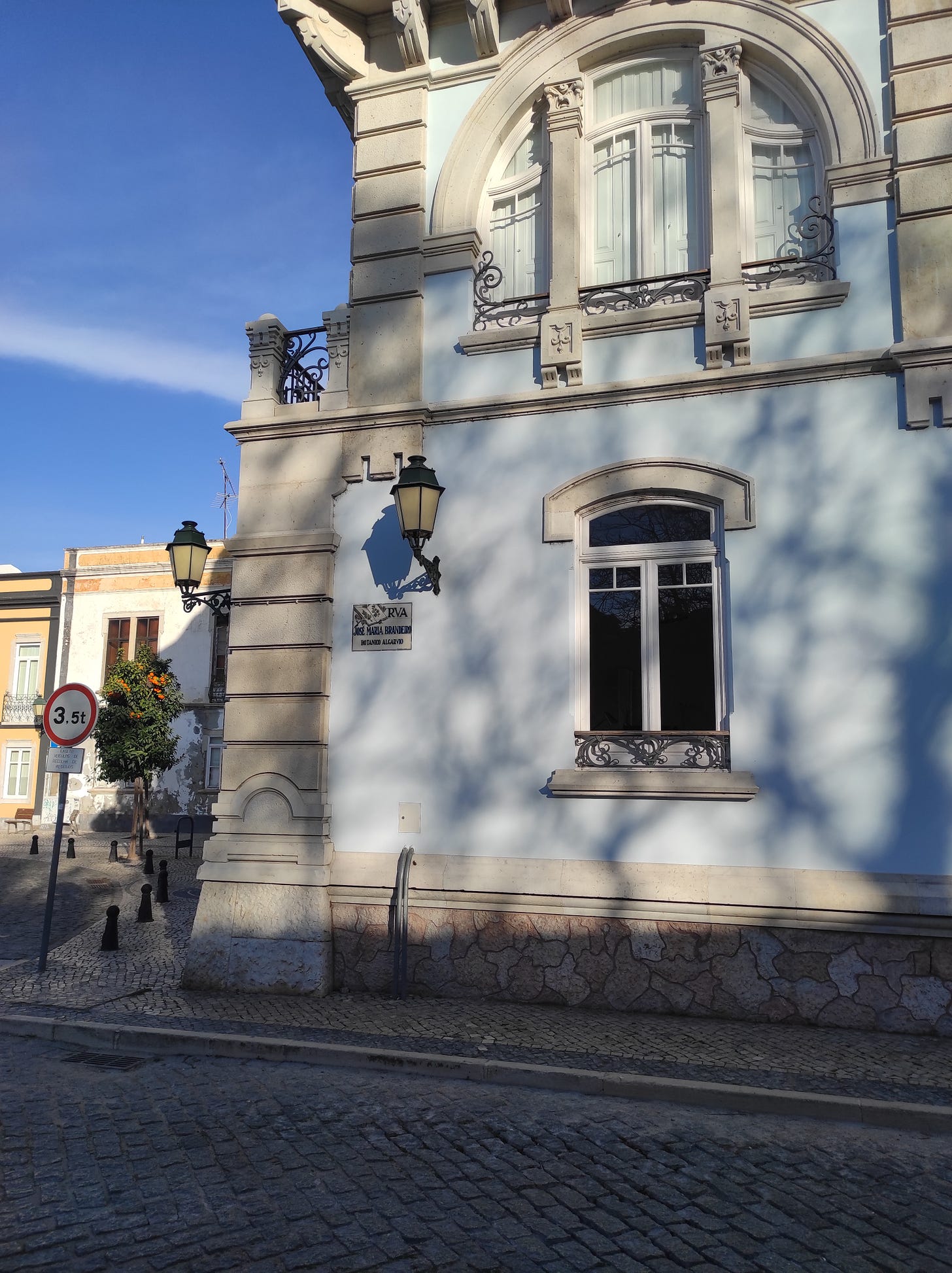14. City Citrus: musings and folkloric history (herstory? theirstory?) about the lovely and mystical Sweet Orange
Gossip Amongst Fronds is a free Sunday newsletter. If you love it, consider supporting it financially. For €5/month, you’ll gain access to my sporadic plant advice column, simple seasonal recipe, and occasional podcast where I interview like-minded creatives. Thank you for being here!
Thank you for your understanding my delayed newsletter this week! I mentioned the delay on my instagram - if you would like to keep more up to date with what I am up to and see more photographs of my travels, feel free to follow here.
Some of you may know my obsession with citrus, and more of you may know my fails with growing my own citrus. While in the Algarve region of Portugal, forever drawn to the local botanics of every town I visit, I noticed the plethora of citrus trees lining city streets.
I wish more cities indulged in growing edible fruits and vegetables for the general public. Unless you are a seasoned forager, or you take a foraging course (which I did in Amsterdam and enjoyed very much!) you can generally assume that most green spaces in cities are built to house happy dogs, burnt out humans, and trees that are in constant discomfort from city pollution. Before partaking in the foraging field trip around Frankendael Park, I never would have realized that the wisps above me as I biked along one of the main promenades was actually a linden tree, offering it’s blooms and leaves as medicinal edibles to previously mentioned burnt out humans. Common weeds like nettle, sweet sicily, and dandelion, all provide different medical qualities to aid in certain health issues. You can occasionally spot wild garlic shoots poking out from mulched ground beneath the trees, if you go off the main paths and aren’t afraid to get your sneakers a tad muddy. Perhaps it is more about learning what these plants are that give us so much solace on lunch break walks, and also motivation to petition for more planting of edible trees and plants that can survive the varying climates we all live in - or just planting them ourselves.
These days, at least on my algorithm, people are waking up to the possibilities of foraging. It was one activity that was allowed during the more intense covid lockdowns of 2020 and became a fun educational activity for especially those living in cities. I feel less guilty about snipping away some dandelion leaves for a salad (or cooked in olive oil, pinch of apple cider vinegar, topped with grated pecorino romano), than I do reaching high in full view to gently harvest a ripe orange. Even though they are there, bountiful and beckoning, there is something sinful about the eden-like act, as if it is too good to be true in our capitalist society that these are freely growing for the community.
In Portugal, I revelled in the orange trees lining most streets, even in the most downtown of areas. Fruiting in the midst of winter, oranges are the respite from chillier winter temperatures and moodier ocean shorebreaks. You can find citrus trees throughout all of Southern Europe, oranges floating over from Morocco (thank you dad for this reference), but after a little googling a while back, I found out that all citrus originates from the Southeast Himalayan foothills, northern Myanmar and Western Yunnan.
When we arrived at our airbnb in Lagos, we found a basket overflowing with gifted perfectly ripe oranges, the sweetest we had ever tasted. I wondered if there was a reason behind this citrus world, moreso orange, world and stumbled upon a few possibilities…which led me to the folklore tale of the Three Oranges dating back to 1882. A completely terrifyingly racist love story that I will not detail nor link here as I was a bit horrified reading it. But it is an example of how oranges have been a sacred aspect to Portuguese culture for centuries.
The earliest documentation of the sweet orange we know today being found in Europe is in Italy in 1475. In Portugal specifically, an even sweeter and more delicious version of an orange was brought back during the Portuguese colonial attempts in Goa, India. The dry climate and caffeinated sunshine radiating down on all the adoring plants in the south provided the perfect environment for these citrus babies to thrive. Therefore, today we have plentiful amounts of these amazing oranges available through the wintertime, offering up some of the best orange juice you will ever try. There are many more historical moments that featured oranges (including The War of Oranges between Portugal and Spain!), if you are interested to know more, I can direct you to a few interesting articles, such as this one.
During this trip, I felt a rekindling of the magic behind citrus fruits and their enchanting qualities. I love how this article describes it: “Oranges have a conflicted history as symbols, both naughty and nice. In folklore, oranges exchanged among the unmarried was a subtle way of saying, “Let love blossom.” In Greek mythology, they had ties to fertility and innocence. In Victorian times, orange blossoms were used for garlands, bouquets, and tiaras for brides as symbols of youth, purity, and eternal love. Conversely, oranges also epitomized lust, seductive powers, passion, and flamboyance.”
Nowadays, it is such a commonplace fruit, we can easily forget how other-wordly it must have been when it was first brought over to Europe. Even today, the multi-sensory experience of eating an orange and the way the scent lingers on your fingertips, it all evokes a passion I have yet to find when eating other fruits. Although, I did find some tamarillo in Lisbon that was a religious experience for my taste buds.
I will save that story for another time. In a meantime, for some escapism, here is a glimpse into a stairwayed alley in Lisbon that led to a citrus courtyard…
In Lagos, I spotted a shy kumquat peeking into the street from behind a garden wall , which was the cutest thing I have ever seen, besides my fur babies of course.
Happen to have some oranges or other citrus lying around? This article has a few ideas of what you can do with them! I have some bergamot that has been sitting in my fridge in Amsterdam since returning from our Italy trip….will attempt marmalade sweetened with some oranges brought back from Portugal and report back <3
Thank you so much for your continued support on this plant-newsletter journey! I hope your winter is going well. The predicted snowfall for this Dutch winter seems to have fallen through and the buds of my neighbour’s magnolia tree have started to seep in despite daunting white skies. See you in a few days for a newsletter about my exploration through a centuries old garden in the west side of Lisbon, here is a sneak peak at one of the plants:
Know anyone who loves citrus or perhaps has their own orangery?
Have you already subscribed? Help keep me going with these plant stories and get access to other goodies such as recipes, podcasts and more!





